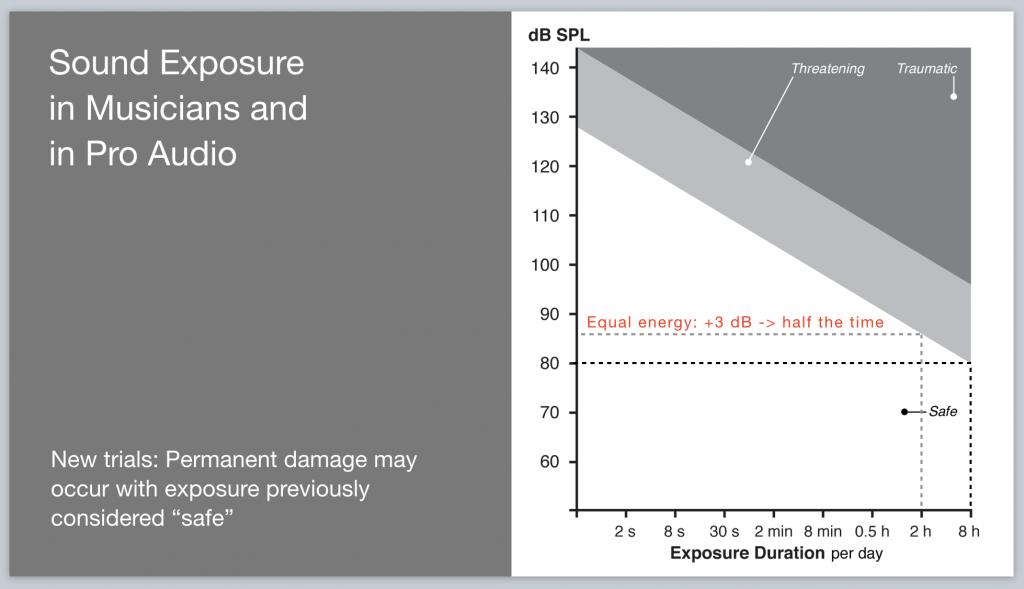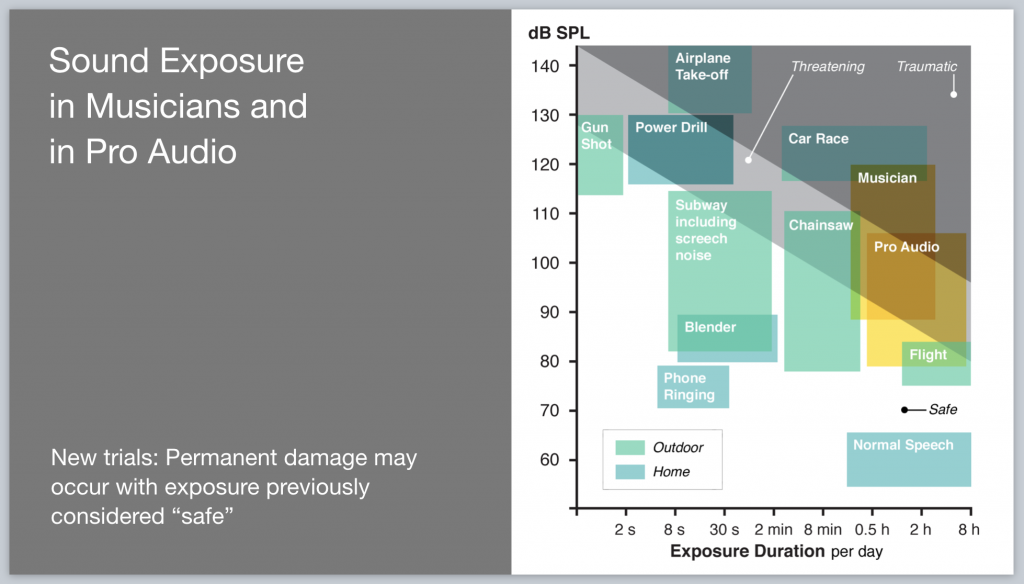HAVE YOU DAMAGED YOUR EARS?

As someone who has been to many loud concerts and spent countless hours in front of studio monitors at high volumes, I have to answer that question with a yes. However, up until recently, it’s never been a question I gave much attention to. Something I now regret.
It was Mid 2018 and out of nowhere I noticed a high-pitched ringing in my left ear. It’s something that I wasn’t too concerned about at first as I’d not really noticed it before. But over the following few weeks it got worse, much worse to the point that it was all that I could hear. It drove me crazy. I couldn’t sleep and it only went away when it was masked by louder noises. I went to a hearing specialist who told me I had hearing loss in that ear. This was both surprising and alarming as I always thought I had pretty good hearing. I started madly googling hearing loss and reading documents relating to tinnitus. I swiftly made an appointment to see my GP who told me my ears looked fine and the tinnitus could be due to stress….hmmm…maybe. All this caused a lot of anxiety which in turn made the tinnitus worse. What could have caused this? As I mentioned earlier, I had spent many years exposed to high SPL without issue. After giving it more thought I remembered that I had been working on some music on headphones over the previous 3 weeks leading up to the incident. I mostly listened pretty reasonably but at times cranked it up loud, at times for 30 minutes or so. Could this have been the instigator? I don’t really know but what I do know is that I now have permanent hearing loss and tinnitus in that ear – the ringing has also moved to the other ear. Now, in 2020 I can say that the ringing has dulled a little and I have come to live with it. I still hear it though and on occasions it’s still really loud.
So what am I saying here?
I’m saying that I believe my condition could have been prevented. And I would give everything to rewind the tape and tell myself to keep the volume down. Unfortunately, this is not possible so as a warning to my fellow music colleges please give consideration to the volume at which you listen, record and mix. You don’t want to be in my situation.
The Facts
Thomas Lund, Senior technologist at Genelec provides some invaluable data on Audio Frequency, SLP, dB and listening exposure – all the parameters that form to create hearing loss. Thomas claims there are dangerous decibels but further to this, it’s not just about how loud something is but at what frequency and how long we expose our ears to it. All these things contribute in some way to possible damage to your ears.
In the BLOG “High SPL Monitoring – The Facts” Thomas Lund states, “the highest non-professional sound levels we encounter on a regular basis may easily exceed 110 dB SPL. Normally, that is not a health concern, provided integrated sound pressure per day (8 hours) is kept below 80 dB(A) for an adult and 75 dB(A) for a child. Apart from the first 200 ms of sudden excessive exposure, reflexes cause muscles in the middle ear to reduce gain by 20 dB, thereby protecting sensitive receptors in the cochlea; unless the high exposure lasts for two minutes or longer, at which point muscles start to fatigue.”
So we have some form of protection to high SPL which is great but not something we should rely on.
See the diagrams below “Sound Exposure in Musicians and in Pro Audio”

As you can see in the graphs here provided by Thomas Lund there is a Safe Zone, a Threatening Zone and a Traumatic Zone. Staying in the safe zone will protect your ears however you must consider the duration of time of exposure when moving into the Threatening and Traumatic Zones. These Zones are where hearing damage will occur. Going by this chart you can safely work at 80dB for an 8 hour period. For SPL higher than that you will need to reduce the amount of time you expose your ears to it.

In the second graph you can see the types of noises that we may typically be exposed to on any given day. As a musician or Sound Engineer we are susceptible to being exposed to Threatening or Traumatic SPL levels on a regular basis. The idea is to limit the time we spend in these Zones so that we can be confident we aren’t destroying our ears. After all, our hearing is something that is precious to us.
CLICK HERE to read the article “Hi SPL Monitoring: The Facts” by Thomas Lund
CLICK HERE to read the article “Professional Listening” also by Thomas Lund
